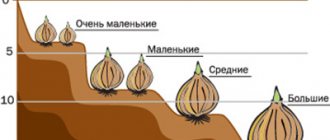If you are planning to grow rosemary at home in a pot, then read the article. It describes the methods and gives useful tips for each stage.
People are accustomed to purchasing the necessary seasoning or products in the store, and this also applies to rosemary. The herb complements delicacies made from meat and fish. Rosemary sprigs add a sweet and sour flavor to the dish, all due to the aroma of citrus and camphor.
Read an article on our website about how to grow herbs on a windowsill all year round . You will find useful instructions and tips.
If you go deeper into history, the plant translated from Lat. means “sea freshness” . The herb has special properties: it reduces anxiety and disorders, relieves tension in the nerves, and improves food digestion. Rosemary contains essential oils and tannins. It is permissible to grow it at home, but you need to know some of the nuances. Read more in this article.
What types and varieties of the rosemary plant are there?
Homemade rosemary
The common rosemary plant grows in Italy, France, and Spain . In localities and regions of Russia it is difficult to grow it into a bush, so they begin to germinate it on their own; the best place is a window. There is also another name for the plant - incense herb .
The variety of rosemary allows you to choose the appropriate option for yourself. The most popular types and varieties:
| Name | Characteristic |
| "Richard" | The bushes reach to 70 cm and are well covered with leaves. The flowers have a light lilac hue. The species can grow in arid conditions, but tolerates comfortable room temperatures better. |
| "Dewdrop" | The herb is classified as medicinal. Full maturity occurs after 1.5 months from germination. Stems reach up to 40 cm . up, the leaves have a dark green tint. |
| "Tenderness" | The variety is well suited for germination in pots. The flowers are distinguished by a rich blue color with needle-shaped leaves ( 4 cm ). The plant needs sunlight. |
| "Ampel" | Decorative variety. Mature rosemary has wavy shoots that hang down to the bottom. Grass requires special care. |
| "Veshnyakovsky Semko" | The leaves are dense and elongated. The flowers are small, shades from lilac to white, combined into single inflorescences. This species is not afraid of arid climates, although good sunlight is important for it, but does not tolerate low temperatures. It is advisable to germinate rosemary in flowerpots; they reach a height of up to 1.5 m. |
Common rosemary brings a pleasant smell of pine needles to the living space of an apartment or house and stylishly decorates the window.
Description and varieties of crops
Rosemary is an evergreen shrub or subshrub that has an original complex aroma, combining the smells of citrus, camphor and pine. Used as a spice in the preparation of meat and fish dishes, vegetable soups. Gives a special taste to soft cheeses and baked goods.
It grows wild in Cyprus, Turkey, and South Africa. It is also found in the south of France, Spain, Italy, and Portugal.
In Russia, at the beginning of the 19th century, rosemary was planted in the Crimea and has since been cultivated as a cultivated plant. In the rest of Russia they do not survive due to frost, but growing in an apartment on a windowsill is acceptable.
Rosemary includes 2 types - ordinary (medicinal) and prostrate. Growing in an apartment from seeds as a houseplant is possible only with medicinal rosemary. When spread out, it forms a spherical bush up to 70 cm tall, planted in tubs, and used in landscape design.
In their natural environment, rosemary plants form lush bushes up to 2 m high and 1.5 meters in circumference. To grow a crop at home in a convenient pot, you need to select dwarf varieties, these include:
- "Tenderness";
- "Dewdrop";
- "Richard";
- "Fragrant".
To grow rosemary from seeds in an apartment, the “Tenderness” variety is often used. These plants are unpretentious, form fluffy, fragrant bushes that, with good care, can grow up to 1 meter in height.
To successfully grow the “Tenderness” variety or any other variety from seeds on a windowsill, it is necessary to create comfortable conditions:
- air temperature in summer is 22–25 °C and 8–12 °C in winter, when a state of rest sets in;
- Place containers of water next to the pot, spray the bush with a spray bottle in winter and in hot weather, otherwise dry air will cause the foliage to wilt.
Growing in an apartment from cuttings is simpler, more accessible and successful:
- Shoots – cuttings – are cut from the plant;
- cleared of lower leaves;
- put in water;
- roots will appear after 1–2 weeks.
Young plants are planted in moist soil. The crown can be pinched for greater growth of the root system and better tillering.
View this post on Instagram
Posted by Lenochka (@alena_a_kononenko) Oct 7, 2022 at 9:47 am PDT
Rosemary plant: requirements for growing it in a pot at home
Sunny grass can grow in areas with cool temperatures , within Russia. There are 2 ways:
- Replanting in a flower pot in winter
- Sprout from seeds
To grow a rosemary plant at home in a pot, it is important to prepare everything you need:
- Drainage filler
- Good soil - rich in minerals and beneficial elements
- Flowerpots
- Light source - not direct sunlight
- Constant ventilation
- Time and a little patience
Common rosemary needs a comfortable temperature with relative air humidity, but a change in temperature (especially minus values) is not desirable.
Features of caring for and growing rosemary in an apartment
Try to adhere to the rule that this plant should always be warm, but not hot. Plus, the illumination should remain at a high level all year round.
But, perhaps, much more important for growing indoors is constant ventilation of rosemary . This flower is not at all afraid of drafts, but in well-oxygenated soil it will develop much more correctly and much faster.
Choosing a place to grow rosemary plants at home
Home rosemary
This plant loves sunlight, so choosing a place to grow rosemary at home is taken with particular seriousness. The grass is sprouted on a window, on a balcony or loggia. These are the best options for common rosemary. These tips for choosing a comfortable place must be followed, especially for beginner gardeners.
Room temperature and excellent lighting are the main conditions for successful plant germination. Therefore, it is important to select the sunny side (east or south) on which the windows face. During the cold season, daylight hours are shorter. Therefore, it is necessary to provide additional lighting - electric lamps. When growing the seasoning in the shade, there is a high probability that rosemary will die, as the leaves will begin to turn yellow and gradually dry out.
Worth knowing: It is forbidden to place flowerpots near radiators; this will negatively affect the soil, leading to drought and death of the grass.
Methods for propagating rosemary
Growing rosemary at home begins with planting the plant (unless, of course, you purchased an already mature plant in a container). There are the following propagation methods that will allow you to grow a perennial at home:
- through seeds;
- by cuttings;
- transplanting a bush from open ground into a pot.
By the way! The following varieties of rosemary are most suitable for growing at home: Dewdrop, Tenderness, Medicinal, Fragrant, Richard.
Sowing rosemary seeds
The timing of sowing rosemary seeds is the same as when planting various crops for seedlings: the first half of spring (that is, March, early April).
Before sowing seeds at home, it is recommended to prepare them, because they take a long time to germinate (14-30 days). Preparation will speed up germination and improve germination:
- The most important thing to do is to stratify the seeds : place them between two damp disks (or in cotton cloth, in damp sand), wrap them in a bag and place them in the refrigerator for 30 days. This material describes how to stratify lavender seeds; you can prepare rosemary seeds in the same way. The seeds of the crop are very slow to germinate, and without stratification they may simply not germinate.
- But if it so happens that you do not have the opportunity to stratify the planting material, then it is advisable, as a preparation, to at least soak them in a growth stimulator, for example, Zircon, Epin (do everything according to the instructions).
You can sow rosemary seeds at home according to this scheme:
- Prepare the container. A common wide bowl about 7 cm high will do; it must have drainage holes.
- Place a drainage layer on the bottom of the container, for example, fine expanded clay, perlite. The layer is about 2 centimeters.
- Fill the container with soil mixture.
- Lightly moisten the surface of the soil with a spray bottle.
- Sow the seeds along the surface of the soil, try to maintain a distance between them of about 1.5-2 cm.
- Then sprinkle the seeds with a mixture of soil and sand, the layer thickness is 2-3 millimeters.
- Cover the container with a lid or plastic wrap.
To grow rosemary from seeds, you need to provide optimal conditions after planting: air temperature around +25-27 degrees Celsius; the place can be either dark or light (before germination, lighting does not matter).
By the way! You can carry out stratification after sowing the seeds; to do this, you need to cover the container with a lid or wrap it in a bag and put it in the refrigerator for a month. And then just move it to a warm place.
After the rosemary seeds germinate, you need to remove the lid (or film) and move the container to a room with a temperature of +18-20°C, with good lighting.
A month after the emergence of shoots, it is necessary to pick out the rosemary. Plant young shoots in separate cups:
- You need to dive carefully, try not to damage the roots; you don’t need to shake off the soil from them. You can pick up a seedling in a bowl with other plants using a wooden stick.
- Fill the cups with soil in advance and make a hole in the center.
- Place the seedling there, cover it with soil, compact it slightly and water it.
- After 1-2 months it will be possible to transplant into a larger container.
Rosemary cuttings
You can grow rosemary at home not only from seeds, but also from cuttings. The method of reproduction is quite simple, the main thing is to do everything correctly.
The first step of cuttings is preparation of cuttings , which consists of the following steps:
- The first thing, of course, you need to find cuttings: they should be semi-lignified, 10-15 cm long, they should be taken from the top of the branches. If you don’t have rosemary in your garden, you can buy sprigs in a store or market (the main thing is that they are fresh and not wilted).
- Remove all the lower leaves (the upper ones must remain!).
- Now you should root it: place the lower ends without leaves in a jar (or cups) with clean and soft water at room temperature. There should not be a lot of water in the jar, 3-4 cm is enough (as the water evaporates, it needs to be added).
- Place the cuttings in a jar in a warm place with a temperature of 22-25 degrees.
After 2-3 weeks, roots should appear on the cutting; you should immediately transplant the cutting into a container with soil. Such specimens should not be kept in water; the roots should be no longer than 5 mm; in this state they will take root and take root in the ground better and faster. Planting germinated cuttings in a container is carried out according to the following rules:
- Prepare plastic cups (or cassettes) with drainage holes, the optimal volume is 100 ml.
- Fill the cups with soil.
- Immerse the cutting in the center of the cup (to a depth of 3 cm).
- Water carefully so as not to wash away the soil.
- Cover the cutting with a plastic bag, but be sure to make several small holes to allow fresh air to enter.
- Now move the containers to a bright and warm place.
- After about 3-5 weeks, new leaves should appear on the cuttings, after which you need to gradually remove the film cover.
- Pinch the top of the cutting to encourage side shoots to grow.
How to dig up a bush for the winter
Rosemary is grown in our country in different parts with different weather and climatic conditions. In southern regions with warm winters, the perennial can successfully overwinter. But in cold regions (in the middle zone (Moscow region), in Siberia, in the Urals, in the Leningrad region, etc.), the southern plant most likely will not survive the winter. Therefore, digging up rosemary for the winter and storing it is an important point in caring for perennials.
You need to dig up the bush in late autumn, when the ground has not yet become frozen. You should carefully dig around the bush in a circle so as not to damage the roots. You need to remove a whole earthen ball with roots from the soil and transplant it into a new pot using the transshipment method. Then fill the voids with soil, water them and place them in a cool place without direct sunlight for 10-14 weeks for adaptation. And then you can move it to a bright windowsill. And in order to preserve rosemary throughout the winter, it is necessary to provide it with comfortable conditions, but more on that below.
By the way! The dug up and replanted bush can either be planted back into open ground in the spring, or left for growing in a pot.
Rosemary Pot: Choices for Growing
The roots of the plant are branched - this must be taken into account when choosing a pot to plant it in a spacious container. The ideal solution for rosemary is pottery or clay pots. It is not advisable to choose plastic and wooden pots for growing, as this interferes with normal air circulation and may cause mold development and rotting.
The main thing is to lay drainage on the bottom of the pot: expanded clay, aquarium soil or small pebbles. To prevent moisture retention, it is advisable to leave a small hole in the bottom of the planter.
General information
Rosemary is an evergreen perennial from the Lamiaceae family. Found in the Mediterranean; It does not grow wild in Russia. Settles mainly in the mountains, on dry slopes.
Rosemary in a pot is one of the members of the genus, Rosmarinus officinalis, better known as "medicinal". It is a tall, about 50 cm, shrub with tetrahedral pubescent branches. The leaves are opposite, linear, dense, curled at the edges, with rounded ends. The flowers are on very short stalks, collected in small racemes, bluish-violet, with an elongated lower petal. Blooms in April-May. 3-4 months after pollination, one round, brownish, nut-like seed ripens in the capsules.
Young shoots, flowers and leaves contain essential oil in high concentrations. By rubbing the leaf, you can smell it, reminiscent of a mixture of the aromas of pine needles, lemon and camphor. Infusions and decoctions of this plant are used as an anesthetic, tonic and strengthening agent. Using rosemary as a seasoning improves digestion, and its bitter, spicy taste adds zest to dishes.
Rosemary oil has even been used in cosmetology and perfumery: today this plant is grown for industrial purposes. Few people know that a unique spice can bring benefits simply by standing in a pot on the windowsill. Volatile substances released by the plant purify the air, destroying harmful microorganisms, including staphylococci, streptococci and fungi.
Preparing the soil for growing rosemary
Successful cultivation of an evergreen plant in a flowerpot depends on the condition of the soil. Therefore, it is important to prepare it. Rosemary is not demanding, but it is still important to choose neutral and slightly alkaline soil. For good air circulation, you need to add a small amount of sand. There is also another option: purchasing ready-made land for a house. flowers at a specialized retail outlet or combining humus with soil from your plot of land.
So, as mentioned above, before planting a plant for cultivation, the soil ball needs to be prepared. The soil is a favorable environment for the development of pests, so it is important to pre-treat it before sowing:
- Special preparations that are sold in any flower shop. This method kills harmful bacteria and microorganisms.
- Heat treatment: roast the soil in the oven at high temperatures for several hours.
- Cold Exposure - Place the soil outside in the cold for a week.
Place the drainage in a thin layer on the bottom of the pot. To create comfortable conditions, fill the soil in advance, 7 days before planting. In order for it to be perfectly saturated with oxygen, just hold it on paper and then pour it into a container for the flower to grow.
Plant care: watering, fertilizing, lighting
All green spaces love a balance of three components: illumination, temperature and humidity. The aroma of the oils that the plant emits depends on how you care for the rosemary. Under natural conditions, the balance of these factors is ensured, that is, with a decrease in temperature, illumination decreases and humidity increases and the plant enters hibernation.
In room conditions, the temperature is high, the daylight hours are short and we use plenty of watering, thinking that this is for the good. This is why the rosemary dries out.
In winter, the plant should be watered no more than once a week with settled water, but not overwatered. Water for irrigation should be slightly alkaline, so you need to let it sit for about 24 hours, do not cover the container so that chlorine and other heavy metals evaporate.
Rosemary means sea dew, it grows along the seashore and loves moist air. Therefore, you need to spray it periodically or place small bowls of water nearby. But you don’t often need to water the ground, especially in winter.
Almost all plants do not need to be fertilized in winter, including rosemary. Feeding a weakened, half-dormant plant with fertilizer can only cause harm. You should start fertilizing your rosemary bush in mid-March.
Rosemary plant: growing from seeds at home
Rosemary: growing from seeds at home
This is a method that will allow you to grow a rosemary plant yourself at home. You need to purchase seeds at a specialized retail outlet - a flower shop. It's simple, the main thing is to choose the variety you need. There are some species that take a long time to germinate. But in any case, you can germinate any seeds. This can be done in spring or autumn - the seeds will germinate at home in any case, cool outside or warm.
Prepare the conditions for sowing in advance:
- Induce germination - place seeds in damp gauze for 4 days .
- If necessary, season the dried gauze with water (a small amount so that the seed does not rot).
- After 4-5 days the seed germinates.
- Make a hole in the ground (about cm) and place the seedlings there.
- Fill the hole with a small amount of soil and cover it with plastic wrap with holes (this will speed up growth).
- Place the pots in a sunny place at an air temperature of +20°C .
- Then, with abundant growth, move the seedlings to the window.
Worth knowing: It is not advisable to plant seeds in one container, as this may cause competition with the root system.
Planting rosemary
When growing in an apartment, a spacious pot made of porous clay is suitable, since rosemary has a fairly powerful root system. The minimum height of the pot is 20 cm, width is at least 25 cm.
The use of wood and plastic is undesirable. Mold will appear in a wooden container, and the roots will suffocate in a plastic container. It is necessary to add drainage to the bottom to prevent stagnation of water.
How to plant rosemary when growing from seeds in an apartment:
- line the bottom of the container with a drainage layer 4–5 cm high from materials that are not subject to rotting;
- pour soil on top, moisten, level;
- spread the sprouted seeds superficially, leaving at least 4 cm between them;
- place in a transparent bag, making holes for ventilation.
The first shoots appear after 5–9 days. After the seeds begin to grow massively, the seedlings are placed on the windowsill.
Also read about how to plant rosemary in open ground in a garden bed and grow a good harvest.
To see how to plant a plant from branches at home:
Growing rosemary from a sprig or cuttings at home: stages
The cutting process is easy and simple at home. Start at the top of the herb - trim or take a separate herb sprig. So, we grow rosemary from twigs and cuttings.
Preparatory/sequential stages:
- Tear off the lower leaves, place the petiole in water ( up to 2 weeks ) - this is necessary until the shoots grow roots. It is important to keep the water clean by constantly replacing it every 2-3 days .
- When roots appear, plant the cuttings in the ground (pots). Make a small hole in advance, cover it with soil and do not water it too much.
- Trim the tops of the grass to ensure full root formation, although this is not so important.
The best planting time is early to mid-April. Propagation by cuttings is a faster process when compared with germination using seeds.
Harvesting and storage
The branches are ready for cutting when they reach 20 cm or more. They are carefully cut to half their height, washed to remove dust, and laid out in a dark room on a napkin to dry.
After 2-3 weeks, place in hermetically sealed dark jars and store in a cool, dry place. Rosemary can be kept fresh by placing it in a vacuum sealed bag in the freezer.
Rosemary is one of the most expensive spices. It can be grown indoors from seeds (or in a garden bed). The basic needs of the crop are light, moderate watering, and fertilizing in the warm season. If all points are followed, after 4–6 months you can harvest a fragrant harvest.
Do you think growing rosemary in an apartment is a good solution? Share the article with your friends and acquaintances.
Creating favorable conditions at home for growing homemade rosemary
Favorable conditions for the successful growth of homemade rosemary is an important stage. For this grass it is good that the air humidity does not exceed 40% . The seasoning should not grow in drought. The room should be ventilated occasionally, avoiding drafts and temperature .
In the cold season, ordinary rosemary “sleeps”. Comfortable temperature in the winter season - up to +15°С . It’s easy to create such conditions: place flower pots near a window in a balcony or on a loggia. During the growing season, it is important to ensure a constant temperature of +20-25°C.
Remember: Rosemary is a resilient plant. Weakening of the immune system occurs only in winter.
Lighting for grass is enhanced, but not more than 10 hours. per day You just need to make sure that the grass receives enough light from all sides. You need to occasionally rotate the pots with grass 180° 1 r. in 3 days In winter, additional lighting sources are used - special lamps or several small lamps.
Care
Knowing the origin of rosemary will help you figure out how to properly care for it at home. This plant comes from the hot and sunny Mediterranean, where it is accustomed to receiving water not from the soil, but from moist air.
To successfully grow rosemary in a pot on a windowsill, you need a combination of heat, light, moisture and the right type of planting medium.
Lighting
At least 6 hours of sunlight a day will help rosemary grow and develop fully. In the middle zone and more northern regions of Russia, during the cold season it is impossible to do without additional lighting.
If you don't have enough sun on your window, you can use fluorescent lamps. They need to be placed above the plants (within 40-45 cm) and illuminated for about 10 hours a day to compensate for the lack of lighting.
Temperature
Optimal temperature conditions for rosemary:
- spring and summer 18-27 C;
- in autumn and winter 17-21 C.
Watering
Water rosemary only when the soil is dry. This is approximately once every two weeks. First, stick your finger a centimeter into the pot of soil. If it's dry, water the rosemary well, pouring enough water to drain into the tray.
Do not over-moisten the soil - for this spice, drought is preferable to abundant moisture.
In winter, spray the foliage with water from time to time and turn on the humidifier.
Fertilizer
Rosemary in pots usually does not require fertilizer, but if the plant looks pale green or growth is slowing, feed it once a month with a balanced liquid fertilizer (all-purpose) diluted with half water.
Diseases and pests
Rosemary is susceptible to powdery mildew. It looks like white powder on the leaves. Most apartments do not have good air circulation, which significantly increases the risk of plant disease. The best way to get rid of powdery mildew on rosemary is to remove the diseased branches and increase the air flow around it:
- Ventilate the room often.
- Run a fan near your plants for several hours a day.
- In summer, place the pot on the balcony or loggia.
The better the conditions for rosemary, the less likely it is that it will develop any pests or diseases. Regularly check that it is properly watered and is receiving enough light and nutrition.
If your rosemary has a pest infestation, look for products that are harmless to people and pets since this herb is grown for human consumption. For example, one organic control is neem oil. You can also use a soda solution.
Trimming
During the period of active growth, the tops of the shoots are pinched several times. Trim rosemary branches regularly to prevent it from growing too much. This spice can grow up to 120 cm both in height and width.
Transfer
The size of the pot should be approximately equal to the height of the plant that sits in it. Once the above-ground part of the rosemary has outgrown, you need to either move the bush to a larger pot or cut off some of the roots.
If this is not done, over time the foliage will fade and the plant will die because it will not receive the required amount of nutrients and water.
Features of growing rosemary at home
Growing healthy seasonings at home is easy if you care for them correctly. Features of growing at home:
- This herb is propagated by cuttings or seeds.
- It was described above that these 2 processes are different. If the seeds need to be germinated, then with cuttings everything is somewhat simpler; it is enough to plant the prepared shoot in fertile soil (rich in vitamins and microelements).
- At home, grass can grow up to 1.5 meters high.
- For lushness and growth control, it is important to trim off excess leaves in the spring and autumn.
- A healthy shrub on a windowsill is usually about 60 cm . in height, which is quite normal.
Plant care is also important. Read on.
What varieties of rosemary are suitable for growing on a windowsill?
Meanwhile, not all varieties are well suited for home breeding. If you still want to decorate your windowsill with rosemary, then take a closer look at the following varieties:
- Benenden Blue is a universal variety, suitable for both indoor and outdoor cultivation. It has compact growth and soft blue or lilac flowers.
- Seven Sea is a variety that can be grown on the floor next to a window, as even in captivity it easily grows to 50 cm and above.
- Lavender is perhaps the most compact variety. It grows slowly, but always looks neat. Its small flowers are lilac or purple.
Caring for domestic rosemary when growing at home
Caring for domestic rosemary
Common domestic rosemary, although not whimsical, still requires due attention when growing at home. Without this, you won’t be able to grow a good flower. Plant care:
- It is important to shed it with water in a timely manner: 2 times. per week (in winter) and 1 r. in 2 days in warm weather , flavoring with a special fertilizer 1 r. per month
- It is important to ensure that the grass does not dry out.
- Excessive watering is also undesirable. This is fraught with rotting of the roots and death of the grass.
Evergreen grass requires good lighting:
- In the warm season, the pots are placed on the sunny side of your house on the windowsill.
- In winter, artificial lighting is necessary, for a maximum of 6 hours . With a lack of light rays, the leaves fade and dry out.
In a living space, it is important to maintain moisture. The necessary indicators can be achieved with timely ventilation, protecting from exposure to cold air.
Remember: This grass is prone to various diseases when kept indoors and dry.
How to care for rosemary after planting and before harvesting
So, what does rosemary need next for normal development at home?
Note! If rosemary stands in a draft, it may lose its leaves.
Watering
The substrate in the pot should be constantly moist, but in no case wet. It is better to underwater rosemary and allow the soil to dry out for a short time (the plant is southern, and therefore drought-resistant), rather than turning the soil mixture into a swamp. In other words, when watering a plant, you need to stick to the golden mean. Prolonged dampness or excessive drought is extremely undesirable for rosemary: in the first case, the roots will begin to rot and the plant will die, in the second, the leaves will turn yellow and fall off, after which the rosemary will dry out.
Watering should only be done with water that has stood for 1 day at room temperature.
During flowering and in winter, the amount of watering is reduced to a minimum. However, it is important to monitor humidity in winter when batteries dry the air. But in summer you need to water it abundantly (at least 2 times a week).
At first, when rosemary is just gaining green mass, it should be sprayed periodically. But an adult plant is no longer necessary.
Top dressing
It makes sense to fertilize rosemary only during the initial growth period - a couple of times every month. Liquid mineral fertilizers can be used as fertilizing.
Another option is to feed with honey water (1 teaspoon per 0.5 liter of water).
Idea! Buy good fertile soil that contains humus, compost or vermicompost, and then you will not have to add any fertilizers to the soil.
Transfer
Young rosemary needs to be replanted once a year, preferably in the spring (around April). And over 5 years of age - once every 3-4 years, and it is advisable to change the top layer of soil annually.
Transplantation is carried out using the transshipment method:
- The plant, together with the earthen lump, is removed from the old pot, and shortly before this, it is shed generously so that the earthen lump can be conveniently taken out (so that it does not crumble).
- Transfer it to a new pot and add the missing soil, compact it lightly and water it.
Trimming (pinching)
In rosemary, it is necessary to periodically trim the shoots, thereby forming a bush, giving it the desired shape.
Trimming stimulates the plant to actively grow, as a result of which rosemary grows many new shoots and becomes more lush and beautiful.
Important! Rosemary will tolerate pruning well if only 2/3 of the young shoots remain. But pruning to old wood makes the plant weak and vulnerable, and it may begin to hurt.
Cut branches can be used for food or cooking.
By the way! Over time, rosemary in a pot can be formed into a small tree (bonsai).
Diseases and pests
Unfortunately, rosemary is very fond of spider mites (especially when the air in the room is dry) and aphids . At home, to get rid of pests, it is advisable to use biological products (such as Fitoverma). In general, tobacco dust repels harmful insects well.
By the way! Due to stagnation of air and lack of ventilation, as well as too high humidity, powdery mildew may appear on rosemary.
Video: the whole truth about growing rosemary on the windowsill
Homemade rosemary: diseases and pests
Achieving a healthy appearance of this useful plant is not difficult if you follow the rules of watering and good lighting. In addition to the fact that the homemade rosemary bush has an antibacterial effect, it is not spared from some diseases. Here are the diseases and pests of the plant:
- The pleasant pine smell is not felt - heavy watering. Reduce soil moisture slightly, but do not overdry.
- Powdery mildew - abundantly covered with light dots. In appearance it can be compared to flour spilled on a plant. This is possible in case of strong humidity and dryness of the room.
- Spider mites - You will see spider webs on the leaves that are starting to turn yellow.
- Aphids - the leaves curl into a tube and turn yellow.
- Scale is a growth on the stems and leaves of a plant.
- The whitefly is a small moth with white wings. It eats leaves, causing them to wither and turn yellow.
It is possible to eliminate pests yourself by spraying concentrated laundry soap or using products that can be purchased at specialized flower shops. It is rare to observe such diseases on a windowsill, unless the soil was initially contaminated (treatment as described above will help).
How to grow rosemary from cuttings on a windowsill
An even simpler method of propagation, unlike seed propagation, is ordinary cuttings.
For this option, it is important to be able to choose the right processes. Suitable ones are those that are at least 10 cm in length (which means that they grow for at least six months) and have the most healthy, fragrant appearance.
It is advisable to fertilize the new place where the cutting is planted well. You need nutritious soil. It wouldn’t hurt to add “Kornevin” to the soil to increase the chances of successful rooting.
A new cutting should be planted exclusively at an angle. After this, it is good to water and grow the sprouts in the brightest place in the apartment or house.
A sign of successful rooting is the appearance of new leaves on the cuttings. If everything is done correctly, you will notice this 1-1.5 months after the transplant.
Collection and storage of homemade rosemary after cultivation: stages
Storing homemade rosemary after growing
The last pleasant stage after growing is harvesting. Carefully collect the shoots of the plant; the special aroma is stored on its upper parts. Just carefully cut off the tops of the branches 15-20 cm long. Choose the juiciest and greenest branches.
Homemade rosemary herb perfectly complements many dishes, giving an intense sweet and sour flavor. Beneficial properties are retained for a long time even in dried or frozen products.
Sequence of drying and storing rosemary - stages:
- Rinse the stems thoroughly, dry on a towel, dabbing with a dry cloth.
- Place the prepared branches on a sheet, cover its surface with parchment paper in advance.
- Dry in a dark and well-ventilated place for about 20 days , occasionally turning the branches over for even drying.
- Then tie the dry twigs into a bundle and hang it in the pantry for storage.
- Should be stored no longer than 1 year . You can put the twigs in a cloth bag.
Dried rosemary
Gardeners and experienced housewives also dry rosemary in the oven:
- Set the temperature to minimum.
- Keep the spread branches on a sheet on the top shelf for 3-4 hours.
- Then tie the branches with rope and put them in the pantry for storage.
You can also dry the herbs in a vegetable and fruit dehydrator.
Dried rosemary sprigs in the oven
It’s also good to do vacuum freezing:
- Wash the branches and place them on parchment paper until completely dry.
- Place them separately in the freezer.
- When the grass is frozen, place it in a separate bag.
In winter, it is convenient to take the right amount of seasoning and use it in cooking.
What soil and pot are suitable for rosemary?
Selecting a suitable pot and substrate is the most important component of successfully growing Provençal plants at home.
The optimal pot for rosemary should be spacious and have drainage holes. The root system of the plant is strong and branched, so it needs a wide container, approximately 15-20 cm high, about 25 cm wide. As for the material, it is recommended to choose clay or plastic. There should be a tray under the pot so that the water drains into it after watering.
The soil mixture should be light, loose, nutritious, well-drained, moisture- and water-permeable, neutral or slightly alkaline in acidity. Under no circumstances should the soil be acidic, heavy, or clayey! You can plant rosemary in a universal soil mixture for seedlings (3 parts), mixed with sand (1 part) and perlite/vermiculite (1 part). If you don’t want to buy soil, you can dig up garden soil and mix it with sand and perlite (in a ratio of 4:1:1).
Advice! It is recommended to disinfect the soil for indoor plants before use to eliminate pathogenic microflora. Steam it effectively and then pour it with Fitosporin.
Mistakes when growing rosemary at home
Properly growing a healthy rosemary plant on a balcony or window indoors is not a complicated process. But you need to know some aspects of caring for this grass. As people say: without labor and effort you can only grow rubbish. Mistakes that flower growers often make:
- It is prohibited to replant grass. Caring for evergreen grass itself requires careful treatment, especially in the cold season, it is during this period that the immune system weakens.
- Bad light. It is also important to provide proper light - up to 10 hours . If necessary, additional light sources should be used.
- Poor water or, conversely, oversaturation of the soil with moisture. In fact, there are no special recommendations when watering. The main thing is not to overwater and not to dry out the soil of the plant.
- Lack of feeding. It is necessary to take care of fertilizing with useful microelements, which are publicly available in the store.
Rosemary is not often grown at home on the windowsill. Its pleasant pine aroma fills the entire apartment, relieving fatigue and pain. Depending on the growing conditions, it is worth maintaining a comfortable room temperature, relative humidity and a well-ventilated area. Only in this case will you grow a beautiful and fragrant plant, as well as a spicy and healthy seasoning for dishes and herbs for treatment. Good luck!
Types of homemade rosemary with photos and names
There are five types, the most common of which are two:
Rosemary prostrate (garden)
The height of the spreading shrub is up to 0.7 m. The leaf blades are small (up to 3.5 cm) and thin. Young plants have bright green leaves, while more mature ones take on a bluish tint. The flowers are violet, lilac or deep blue. It has a pleasant taste and is widely used in food. Popular varieties include:
- Corsican prostrate - spreading shrub up to 0.5 m high; The flowers are deep blue.
- Ampelous rosemary is a perennial bush with spiral-shaped shoots that cascade down in beautiful cascades. Used to decorate walls and rock gardens. Very thermophilic.
- Creeping – tall plant; shoots of bushes spread along the ground.
Rosemary (medicinal)
Tall (sometimes up to 2 m) erect shrubs. The leaf blades are leathery and tough. Small flowers are colored pink, white, purple. Adapts well to indoor conditions. Widely used in cooking and medicine. Popular varieties:
- Lavender is a bush with bright lilac flowers with a purple tint.
- Tenderness - the bushes grow up to 100 cm. Seedlings are planted in open ground when it becomes very warm. Loves sunny places.
- Rosinka is a low (up to 0.4 m) bush. Suitable for growing indoors. Does not tolerate shade.
A valuable plant widely used in cooking, medicine, interior and landscape design. Planted at home, the shrub invigorates with a subtle coniferous aroma and delights with unusual flowering.
Methods for storing rosemary
Features of growing aubretia
Housewives try in different ways to preserve the beneficial properties of greens by preparing them for the winter.
Just dry and chop the rosemary to make a seasoning for meat and vegetables.
You can buy natural rosemary here
You can also freeze the grass, pickle it or add oil.
Before drying, you need to rinse the branches well, dry them, chop them finely, lay them out in a thin layer, cover them with gauze and put them in a dry, warm place.
Frozen herbs better retain their appearance, vitamins and aroma.
The greens are washed, cut and sent to the freezer.
It is then important to thaw it in portions immediately before use, and not all at once
Where to buy real spices?
Rosemary, what is it?
Rosemary is a shrub that belongs to the Lamiaceae family. Its leaves are thin, long and hard, remain bright green all year round, very similar to spruce needles. And the taste is reminiscent of pine needles, but it has nothing to do with plants of this species. Rosemary is translated from Latin as “drops of the sea.” During flowering, it is covered with light blue or purple fragrant flowers, which is how it got its name. A strong branched root system reaches 4 m deep into the ground, the height of the bush reaches one and a half meters.
Rosemary is a child of the warm Mediterranean and thrives in areas with warm climates. Found in Europe, in Crimea the bushes are used as hedges.
The complex composition of essential oils contained in the leaves of the plant gives them an extraordinary taste, which makes it possible to use it as a spice. Rosemary is widely used:
- seasoning adds sophistication and unusual taste to dishes;
- with its participation complex spicy mixtures and aromatic salts are made;
- used in industry in the preparation of semi-finished products, canned food, marinades;
- tinctures and wine are made from it;
- in folk medicine, decoctions are prepared for diseases of the gastrointestinal tract, cardiovascular, and genitourinary systems;
- rosemary is added to cosmetics and perfumes;
- Medicine does not refuse it; it is included in medications.
How to grow rosemary yourself so that you always have this wonderful plant at hand?
When to plant rosemary seeds for seedlings: timing
Like other flower and vegetable crops, it is optimal to plant rosemary seedlings at the end of winter, at the beginning of spring. As a rule, the procedure is carried out in March.
When choosing the timing of sowing rosemary seedlings, it is extremely important to take into account the place of residence, for example:
- in the middle zone (Moscow region) - optimal planting is in mid-March;
- in Siberia, the Urals, and the Leningrad region - it is better to sow the crop at the end of March, at the beginning of April.
- in the South (Krasnodar Territory) - an earlier disembarkation time is acceptable, for example, at the end of February.
Note! The dates for sowing seeds are indicated. But the seeds must first be stratified. Stratification will take 2-4 weeks, so if you plant seeds for seedlings in mid-March, then in mid-to-late February you will need to send the seeds for stratification.
You can also choose the time for sowing rosemary according to the 2022 Lunar calendar:
- Favorable days: in March: 8, 9, 10, 11, 20, 21, 22, 23, 24;
- in April: 7, 8, 9, 10, 11, 22, 23, 25, 26;
- in May: 8, 9, 10, 11, 20, 21, 22, 23, 24, 25;
- in March: 1, 2, 3, 16, 30;
Description
The plant does not grow wild in Russia. Rosemary is a shrub with a height of 0.5 to 2 m. The branches are tetrahedral, covered with small down. The leaves have very small petioles and are evergreen. In addition to the name rosemary, another name for the plant is sea dew.
Rosemary flowers are sessile and have a blue-violet hue. The outside of the flower is slightly pubescent. The upper lip of this flower has a notched shape.
The fruit of rosemary is an egg-shaped nut.
The plant blooms in spring. Fruit ripening ends by September.
Rosemary
Many gardeners are interested in the benefits of rosemary. The plant contains essential oils. The refreshing rosemary scent appears due to the presence of alpha-pinene in the composition. Carnosol and rosmarinic acid give the plant a specific bitter taste, thanks to which it is used in cooking. Rosemary leaves contain flavonoids: apigenin and luteolin.
Essential oils have a beneficial effect on the body, making a person easily calm down. A specific medicinal smell improves a person’s mood. It helps improve memory and improve concentration, making it recommended when preparing for exams.
In the form of an infusion, the herb is used to treat bronchial asthma and pathologies of the upper respiratory tract. The oil is also useful for the treatment of gastrointestinal pathologies: it perfectly improves appetite. To reduce the intensity of headaches, it is recommended to inhale the oil of this plant.
An infusion of this herb with the addition of lavender has a positive effect on health, in particular on the movement of blood through the vessels. It helps in treating neuritis and gout. Rosemary oil is used in aromatherapy and cosmetology and is excellent for lowering blood pressure.
Rosemary
Rosemary from seeds. How to plant and grow
Features of planting and rules for growing wisteria
Almost any home planting has a beneficial effect on the overall climate in any home. Plus, rosemary will always be at your fingertips, which means that if you need it in the kitchen, you won’t have to go anywhere for it. This seasoning smells very good. And the smell of rosemary, like itself, is very useful. It will put your nervous system in order, and in addition will increase the overall tone of your body.
What else is good about rosemary? This is not an onion for you; you won’t have to plant it every year, because the plant is a perennial, and also evergreen. It can be grown quite simply from seeds. It is also possible to do this with cuttings. If you use rosemary seeds, you won't need large pots to sow them. Quite average. After all, rosemary is a relatively small plant. This differs from growing homemade ginger, which some people also grow at home.
For homemade rosemary, light and fertile sandy loam will be the best filler for the pot. Rosemary really doesn’t like a lot of water, much less stagnation. So, drainage is required when planting it. Seashells or pebbles are good for this. The soil must be pre-moistened. You don't need to pour a lot of water into it. It should be just a little damp.
How to plant rosemary with seeds?
The time to sow rosemary seeds is the end of February. You can move it a little, to the very beginning of March. Rosemary seeds do not need to be buried. Just place them carefully on the surface, then cover them lightly with soil. Next, you will need to create suitable conditions for the seeds so that they germinate quickly. To do this, simply cover the pot with a piece of polyethylene, and then place it in any place with a suitable temperature. It should be about plus 6 degrees. Even a refrigerator is quite suitable for this.
After 3 weeks, the pot with rosemary seedlings needs to be moved to another place. It should already be warmer and light enough. After “relocating” the pot, the film will need to be removed. Young rosemary seedlings need to be watered carefully, preferably from a spray bottle. Your task with such watering is to moisten the soil only a little. Usually, if you follow all the rules, rosemary sprouts in about a month. When the sprouts are sufficiently strong, they are planted.
Propagation of rosemary by cuttings
If you already have homemade rosemary and you decide to propagate it, then it is quite possible to do this successfully using cuttings. You should start preparing them in the fall. Find young shoots on already mature rosemary and cut them off. The leaves at the bottom of such a shoot are removed, and the branch itself is placed in a solution that is designed to stimulate root growth. They only do this for a few minutes. After this, the cuttings can already be planted in the prepared soil mixture. For rosemary, it is made from peat, river sand and black soil. Rosemary cuttings take about a month to take root.
Care
Homemade rosemary as a whole is not a particularly demanding plant if you create comfortable conditions for it. There are very few requirements here. There is no need to allow the temperature to drop below plus 10 degrees. In this case, rosemary will continue to grow, but not nearly as actively. Daylight is also important when growing this homemade herb. 8 hours is the minimum. At the same time, rosemary tolerates the hot sun just fine. So in the summer, this is not a problem for him. Water it sparingly. In winter they generally do this if such a need is ripe.
If you like to grow any plants at home, then, for sure, growing rosemary will turn into an exciting activity for you. And to repeat everything again, watch the video tip. Here you will be shown a lot of useful things that will help you grow rosemary at home.
The healing properties of rosemary and its uses
Rosemary contains antioxidants, B vitamins, essential oils and other beneficial substances. The bitter taste of the herb is created by carnosol, rosmanol and rosmarinic acid.
In Medicine and cosmetology
Try this Organic Rosemary Oil
The content of essential oils makes an excellent basis for the production of many medications with a calming and relaxing effect.
Rosemary essential oil is one of the most versatile and should always be in your medicine cabinet. It has a lot of beneficial properties for healing our body.
- for insomnia;
- as an expectorant and diuretic;
- for gallbladder diseases;
- for diseases of the gastrointestinal tract;
- for liver treatment;
- for diabetes.
The aroma of this herb has a beneficial effect on children, pregnant women, and people with an unbalanced nervous system.
A pleasant aroma in the room, if you plant rosemary on the windowsill, will help overcome stress, relieve fatigue and depression.
Rosemary in cooking
Rosemary in cooking has a very wide spectrum of action.
The flowers and leaves of the plant are used to make an aromatic spice that is used to prepare various dishes.
Vinegar is infused as a seasoning; wine is added to meat and fish sauces.
The plant is also used fresh (tops of shoots with flowers and leaves).
Thanks to its coniferous-camphor aroma, as well as its sharp-spicy, slightly bitter taste, the herb goes perfectly with eggplants, cabbage, beans, mushrooms, and fruit salads. Rosemary essential oils are often used for baking and in alcoholic beverages.











